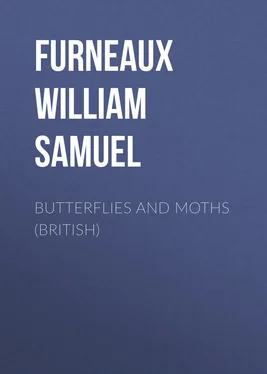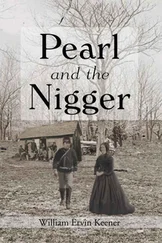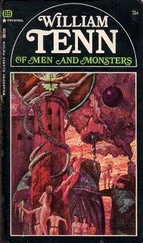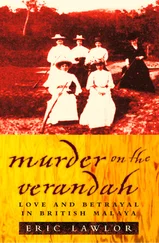William Furneaux - Butterflies and Moths (British)
Здесь есть возможность читать онлайн «William Furneaux - Butterflies and Moths (British)» — ознакомительный отрывок электронной книги совершенно бесплатно, а после прочтения отрывка купить полную версию. В некоторых случаях можно слушать аудио, скачать через торрент в формате fb2 и присутствует краткое содержание. Жанр: Природа и животные, foreign_antique, foreign_prose, на английском языке. Описание произведения, (предисловие) а так же отзывы посетителей доступны на портале библиотеки ЛибКат.
- Название:Butterflies and Moths (British)
- Автор:
- Жанр:
- Год:неизвестен
- ISBN:нет данных
- Рейтинг книги:5 / 5. Голосов: 1
-
Избранное:Добавить в избранное
- Отзывы:
-
Ваша оценка:
- 100
- 1
- 2
- 3
- 4
- 5
Butterflies and Moths (British): краткое содержание, описание и аннотация
Предлагаем к чтению аннотацию, описание, краткое содержание или предисловие (зависит от того, что написал сам автор книги «Butterflies and Moths (British)»). Если вы не нашли необходимую информацию о книге — напишите в комментариях, мы постараемся отыскать её.
Butterflies and Moths (British) — читать онлайн ознакомительный отрывок
Ниже представлен текст книги, разбитый по страницам. Система сохранения места последней прочитанной страницы, позволяет с удобством читать онлайн бесплатно книгу «Butterflies and Moths (British)», без необходимости каждый раз заново искать на чём Вы остановились. Поставьте закладку, и сможете в любой момент перейти на страницу, на которой закончили чтение.
Интервал:
Закладка:
Some species of Lepidoptera lay some hundreds of eggs, and it is seldom that the number laid by one female is much below a hundred.
As already stated, the under surfaces of leaves are generally chosen for the deposit of eggs, but a few of the insects we are considering always select the upper surface for this purpose. Thus the Puss Moth ( page 235 Конец ознакомительного фрагмента. Текст предоставлен ООО «ЛитРес». Прочитайте эту книгу целиком, купив полную легальную версию на ЛитРес. Безопасно оплатить книгу можно банковской картой Visa, MasterCard, Maestro, со счета мобильного телефона, с платежного терминала, в салоне МТС или Связной, через PayPal, WebMoney, Яндекс.Деньги, QIWI Кошелек, бонусными картами или другим удобным Вам способом.
), and two or three others resembling it, though much smaller, known as the Kittens ( page 234 Конец ознакомительного фрагмента. Текст предоставлен ООО «ЛитРес». Прочитайте эту книгу целиком, купив полную легальную версию на ЛитРес. Безопасно оплатить книгу можно банковской картой Visa, MasterCard, Maestro, со счета мобильного телефона, с платежного терминала, в салоне МТС или Связной, через PayPal, WebMoney, Яндекс.Деньги, QIWI Кошелек, бонусными картами или другим удобным Вам способом.
), invariably lay them on the upper surface. And this is the more surprising since the eggs of these moths are brown or black, and consequently so conspicuous on the green leaves as to be in danger of being sighted by the numerous enemies of insects.
The Hairstreak Butterflies ( page 183 Конец ознакомительного фрагмента. Текст предоставлен ООО «ЛитРес». Прочитайте эту книгу целиком, купив полную легальную версию на ЛитРес. Безопасно оплатить книгу можно банковской картой Visa, MasterCard, Maestro, со счета мобильного телефона, с платежного терминала, в салоне МТС или Связной, через PayPal, WebMoney, Яндекс.Деньги, QIWI Кошелек, бонусными картами или другим удобным Вам способом.
) afford another exception to the general rule, for their eggs are deposited on the bark of the trees and shrubs (birch, sloe, elm, oak, and bramble) on which their larvæ feed.
At the moment each egg is laid it is covered with a liquid sticky substance, so that it is immediately glued to the leaf or stem as soon as it is deposited. The sticky substance soon dries, causing the egg to be so firmly fastened in its place that it is often impossible to force it off without destroying it completely.
Some of the Lepidoptera deposit their eggs singly, or in small irregular clusters; but by far the larger number set them very regularly side by side, in so compact a mass that it would be impossible to place them on a smaller area without piling one on top of another. This is not accomplished with the aid of the sight, for the insect performing her task with such precision often has her head on one side of a leaf or stem while arranging her eggs on the other. If you take the trouble to watch her, you will see that she carefully feels out a place for each egg by means of the tip of her abdomen immediately before laying it.
The eggs are laid by moths and butterflies at various seasons of the year. In some cases they are deposited early in the spring, even before the buds of the food plants have burst; and the young larvæ, hatched a few weeks later, commence to feed on the young and tender leaves. Then, throughout the late spring, the whole of the summer and autumn, and even till the winter frosts set in, the eggs of various species are being laid.
Those deposited during the warm weather are often hatched in a few days, but those laid toward the autumn remain unchanged until the following spring.
In this latter case the frosts of the most severe winter are not capable of destroying the vitality of the eggs. In many instances the perfect insect or the larva would be killed by the temperature of an average winter day, but the vitality of the eggs is such that they have been subjected to a temperature, artificially produced, of fifty degrees below the freezing point, and even after this the young larvæ walked out of their cradles at their appointed time just as if nothing unusual had occurred.
Experiments have also been performed on the eggs with a view of determining how far their vitality is influenced by high temperatures. We know that the scorching midsummer sun has no destructive influence on them, but these experiments prove that they are not influenced by a temperature only twenty degrees below the boiling point – actually a considerably higher temperature than is necessary to properly cook a hen's egg.
Let us now examine a number of eggs of different species, that we may note some of the many variations in form and colour.
With regard to colour, we have already observed that the eggs of a few species are black; but more commonly they are much lighter – pearly white, green, yellow, and grey being of frequent occurrence.
The great variety of form, however, will provide a vast amount of enjoyment to anyone who possesses a good magnifying lens or a small compound microscope. Some are globular, others oval; while many others represent cups, basins, and domes. Then we have miniature vases, flasks, bottles with short necks, and numerous figures that must remind a juvenile admirer of the sweet cakes and ornamental jellies that have so often gladdened his longing eyes.
Again, the beautifully sculptured surfaces of a large number are even more striking than their general shapes. Some are regularly ribbed from top to bottom with parallel or radiating ridges, and at the same time marked with delicate transverse lines. Others are beautifully pitted or honeycombed, some ornamented with the most faithful representation of fine wicker-work, while a few are provided with a cap, more or less ornamental, that is raised by the young larva when about to see the world for the first time. A few of these beautiful forms are here illustrated and named, and another has already appeared on page 14, but an enthusiastic young naturalist may easily secure a variety of others for his own examination.

Fig. 11. – Egg of the Meadow Brown Butterfly.
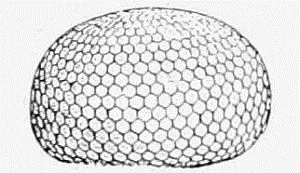
Fig. 12. – Egg of the Speckled Wood Butterfly.

Fig. 13. – Egg of the Vapourer Moth.
It may be surmised from the accompanying illustrations that the form of the egg is always the same for any one species. This is really the case, and consequently an experienced entomologist can often decide on the name of the butterfly or moth that deposited a cluster of eggs he happens to find in his rambles and searchings; but in such decisions he is always greatly assisted by a knowledge of the food plants of the various insects, and sometimes also by the manner in which the eggs are arranged.
Читать дальшеИнтервал:
Закладка:
Похожие книги на «Butterflies and Moths (British)»
Представляем Вашему вниманию похожие книги на «Butterflies and Moths (British)» списком для выбора. Мы отобрали схожую по названию и смыслу литературу в надежде предоставить читателям больше вариантов отыскать новые, интересные, ещё непрочитанные произведения.
Обсуждение, отзывы о книге «Butterflies and Moths (British)» и просто собственные мнения читателей. Оставьте ваши комментарии, напишите, что Вы думаете о произведении, его смысле или главных героях. Укажите что конкретно понравилось, а что нет, и почему Вы так считаете.
